First, we would like to say a big "Thank You" for buying a Home and Roost Hedgehog House.
Thanks from us, and thanks from your local hedgehogs. Making room for a hedgehog house in your garden is one of the best things you can do to help our prickly friends.
Now you have your hedgehog house, we are going to show you how to set it up and use it as well as explaining a bit about hedgehogs and why they need your help.
Hedgehogs in The Wild
Hedgehogs are an ancient animal. They evolved around 15 million years ago. That's long before things like woolly mammoths and sabre-toothed tigers roamed the earth.
Our modern hedgehogs are very like those pre-historic ones. They got on well in lots of different climates and geographies, so there was little need to adapt. There have been a few variations over time. For example, the Mediterranean hedgehog was the size of a pig, but these didn't last.
Hedgehogs are common throughout Britain, Europe and much of Asia, but they don't exist in North and South America.
Hedgehogs like to live in places that offer lots of cover and undergrowth. This environment lets them move around safely, and provides plenty of the food they enjoy.
They like to eat beetles, caterpillars, worms, slugs and snails.
On average hedgehogs live for between 4 and 7 years in the wild.
They breed each year, sometimes twice. Litters tend to be quite small 4 or 5 hoglets on average.
Hedgehogs are one of only 3 British mammals that hibernate in the winter. The others are bats and dormice.
British Hedgehogs Under Threat
Hedgehogs are one of our most loved mammals. They were a common sight in the time of Beatrix Potter and Mrs Tiggy Winkle right up to later years of the 20th century.
But in recent years their numbers have declined dramatically. The last survey, conducted in 2015, estimates that there are now only 1 million hedgehogs left in the UK. This number is down from some 36 million only 50 years ago.
We are losing hedgehogs because they are losing habitat and food. As the name suggests, hedgehogs like hedgerows. With intensive farming, these are disappearing.
Intensive farming and the use of pesticides also killed off many of the beetles and other insects that hedgehogs like to eat.
The Good News
The good news is that while hedgehogs' traditional habitat in the countryside is under threat, gardens and urban areas make an excellent place for hogs to live.

Recent studies show that in urban areas, hedgehog numbers are no longer declining and maybe on the increase.
Shrubberies and borders provide many of the benefits of hedgerows. The variety of plants grown in parks and gardens offer more insect life than a commercially farmed field.
With the addition of a few hedgehog-friendly features, your garden can make a real contribution to the recovery of the species.
And this is where your new hedgehog house comes in.
How Will Your New House Help Hedgehogs?
There are four ways that your local hedgehogs may use your new hedgehog house:
- As a feeding station. Leaving out food for hedgehogs is a great way to help them. Extra food helps them to put on weight after hibernation, get the energy they need to breed and raise young, and fatten up for the winter. Supplying food in a feeding station will make sure the local cats and foxes don't get it, and it will keep your hedgehogs safe while eating.
- Daytime Nest. Hedgehogs are nocturnal and sleep in the day. A hedgehog house can provide a safe place for local hogs to nap, tucked away from any predators.
- Hibernation Nesting Box. Hibernation is one of the most challenging times of the year for hedgehogs. So providing a safe, predator-proof space for them to build their nest is a great thing to do.
- Breeding and Raising Young. In the late spring through to early summer hedgehogs are mating and raising hoglets. Your hedgehog house can provide a safe haven for mother and young.
The set up of your hedgehog house will be different depending on how you plan to use it. We'll walk you through each of the uses now.
About Hedgehog Houses

Hedgehog houses provide safe places for hedgehogs to eat and nest when natural habitats may be lacking.
You could choose to build your own hedgehog house or buy a ready-made, but whichever route you take there are certain things you should look out for.
- The hedgehog house must be predator-proof. This is equally important if it is to be a feeding station or a nesting box. Predator-proofing can come in the form of a barrier outside the door, an entrance tunnel, or an internal partition.
- The hedgehog house should not be easy to tip over. If it is, cats and foxes will tip it to get at the food and the animal inside. A solid-floor house like ours will not tip over. If you make your own house, weight it down with bricks. If you buy a house with no floor, especially a metal-framed, wicker for thatch house, you will need to peg it down.
- Make sure it's big enough. Hedgehogs need room to move around a feeding station and room for insulation in a nesting box. Choose a house that is at least 14 inches across.
- Sharp Edges. Hedgehogs have surprisingly delicate feet, and hoglets are delicate all over. Avoid sharp edges on your house. If you are making your own from a plastic box, tape over the edges you have cut. If you are buying a house check carefully for sharp edges. This is especially important if you choose a metal-framed house.
Features of your Home and Roost Hedgehog House
Predator Proof Hedgehog House and Hibernation Station.



- Dimensions: H24 x W40 x D24 cm. Entrance 13 x 12 cm.
- Weight: 3kg including the delivery box.
- Materials. The house is constructed from Forestry Service Certified timber with an internal plywood partition. The roof is covered with roofing felt for additional weatherproofing.
- Treatment. The wood is treated with a water-based, animal-safe solution to extend the life of the timber.
The timber is also twin treated with an anti-bacterial marcide coating to prevent the spread of disease.
Construction. The house features:
- a removable roof with secure fixings, to allow easy access for cleaning and provisioning.
- a solid floor to prevent the house from being overturned.
- an internal partition for protection from predators. The partition is tacked into place and can be removed if needed.
Assembly. The house comes ready assembled for your convenience.
Deluxe Ventilated Predator Proof Hedgehog House & Hibernation Shelter



- Dimensions: House - H26 x W34 x D40 cm, Tunnel - H14 x W19 x L36 cm.
- Materials. The house is constructed from Forestry Service Certified timber with an internal plywood partition. The roof is covered with roofing felt for additional weatherproofing.
- Treatment. The wood is treated with a water-based, animal-safe solution to extend the life of the timber.
The timber is also twin treated with an anti-bacterial marcide coating to prevent the spread of disease.
Construction. The house features:
- roof - removable for easy cleaning and provisioning, plus strong catches for security.
- tunnel - long enough to keep out predators.
- base - fixed to prevent the house from being overturned.
- ventilation tube - to ensure good airflow, even if the house is buried in snow during hibernation.
Assembly. The house comes ready assembled for your convenience
How to Use Your Hedgehog House as a Feeding Station.
Providing extra food for the hogs in your neighbourhood is one of the most helpful things you can do for them.
You could just put saucers of food and water on the lawn. But you may quickly come to wonder whether you are feeding hedgehogs or giving cats and foxes an extra meal.
Using your hedgehog house as a feeding station will ensure that the food goes to the right animals as well as keeping the hogs safe while they are feeding.
The Right Location for your Feeding Station.
Hedgehogs are quite picky about where they nest, but not so much about where they feed. You could place your feeding station in a nice quiet spot, in the undergrowth, or you could put it on your lawn or patio, where you can watch the nightly action.
The key things to bear in mind when placing your feeding station are:
- be consistent, but the station in roughly the same position each night. If you are placing the feeding station in an open area, be consistent with outdoor lighting and whether you have your curtains open or closed.
- keep the feeding station away from nesting sites. Hedgehogs don't generally eat where they sleep. Also, nesting hedgehogs like peace and quiet, and hogs are noisy eaters.
- keep the feeding station away from boundaries as these may be highways for hedgehogs and other animals, and just too busy for your hogs to enjoy a good meal.
When to use a Feeding Station

You should put food out for hedgehogs from mid-March until mid-November, or until the food is no longer being eaten. From November to March hedgehogs will be hibernating and there is no need to feed, although it is still a good idea to leave out a dish of water.
Food and water should be changed daily. Put out the bowls in the early evening and remove and clean them the next morning.
What to Put in Your Feeding Station
First, line the bottom of the house with newspaper, this will help with cleaning.
Provide food and water in heavy, shallow bowls like this one.
Hedgehogs are clumsy, messy eaters and will easily knock things over. A heavy, shallow dish will help prevent this.
You can feed your hedgehog wet or dry dog and cat food. You can also buy hedgehog food. The advantage of buying specially made hedgehog food is that you can be sure it contains the exact balance of nutrition your hedgehogs need.
Deciding how much food to leave out is a bit of a matter of trial and error. Several hogs may visit your station during any one night. We suggest you start with a small handful of food, then up the quantity if this is all being taken.
You should also leave out a dish of clean water. It is generally best to leave this outside the feeding station. As we mentioned, hogs are clumsy. We would only suggest putting the water inside the feeding station when it's icy. This will help stop the water from freezing.
Things you should never feed a hedgehog

- Bread and cakes; these are low-protein, hedgehogs, like humans will enjoy them, but not get much goodness out of them.
- Milk; Hedgehogs are lactose intolerant. Milk cheese and any other dairy products can cause them serious digestive problems.
- Mealworms; high in protein but also high in phosphorus. Phosphorus makes it difficult to absorb calcium and can cause weak and deformed bones.
- Sunflower seeds and Peanuts; also high in phosphorus, and also may become wedged in hedgehogs mouths.
Cleaning Your Feeding Station

Hedgehogs are usually solitary creatures, but if you leave out food, several will likely come. So to stop the spread of any potential infections, you must keep your feeding station clean.
As well as being messy eaters hedgehogs poop everywhere. So you will need to change the newspaper in your hedgehog house every morning.
You should also remove the food and water dishes, discard any leftovers and give the dishes a good wash in hot water. Don't wash them at the same time as you do your human washing up!
Every few weeks it’s a good idea to give the whole station a good wash down with boiling water.

Watching out for Visitors
If there are hogs in your area, it will probably only take them a week or so to find your feeding station. But be patient! If there is no sign of food having been taken just keep going for another week or two at least.
Remember to be consistent about where you put the feeding station and having outside lights on and off.
When hogs start to visit it may be only one at first, and they may be quite cautious. In fact, it's quite likely that you'll find a poo in the morning before you notice that any food has gone.
In the early days, we would suggest that you leave your hogs alone to get familiar with the feeding station. But once the food is being taken regularly, there is nothing to stop you sitting quietly in the garden and watching them come to eat. If you are quiet and reasonably still you won't disturb them.
How to Use Your Hedgehog House as a Nesting Box
Hedgehogs use nests for nighttime naps, breeding and raising young, and hibernation.
The set up of your house is similar for all three uses.
Please note: if you want to provide a feeding station and a nesting box you will need at least two hedgehog houses.
Where to Place Your Nesting Box

Whether they are taking a nap during the day, raising hoglets, or hibernating hedgehogs like to nest in a quiet, tucked away place.
Natural nesting sites would include the roots of hedges undergrowth and old trees, log piles, under sheds or even down rabbit holes.
They are solitary animals and do not like to be disturbed. They also look for sites that offer good insulation, from cold during hibernation and from the sun during the summer months.
So when you choose where to place your hedgehog house for nesting, look for a quiet spot in your garden.
Don't put the house against a fence or boundary. These are often used as highways by hedgehogs or other animals and will be too busy for your hog to get the peace and quiet it needs.
A site near a shed, or your house, under shrubs, would be great. If you don't have shrubs or undergrowth to tuck your house into then pile some garden rubbish (twigs, grass etc.) over the house. If you have a piece of turf, this is also good to layer over your nesting box.
Make sure that you site the nesting box in a location that does not flood in wet weather. Hedgehogs need to keep their feet dry.
Hedgehogs don't tend to eat where they sleep, so don't place your nesting house near to your feeding station.
When to Set Up a Nesting Box
Hedgehogs nest in different ways all year round.

The nests they use for daily naps are hastily constructed. A hog will bed down for the day in any nest they happen to come across, and there is no sense of territory or ownership of summer daytime nests.
Nursery nests, used for breeding and raising young in the summer are perhaps the largest and most carefully constructed hedgehog nests. These will be used from May to September.
Hibernation nests, or hibernacula, are thick-walled, well-insulated structures. They are used from November to March. Most hogs move house at least once during the winter. When they move, they don't tend to move into an empty nest. They prefer to build a fresh one.
So, you could put out your nesting house at almost any time of year. But the best time is probably April. This will make it available to mothers as a nursery box. And when hibernation time comes in November, the nesting house will already be a familiar feature in your garden, so more likely to attract a winter resident.
What to Put in Your Nesting Box

Your hedgehog house will be used as a structure to hold the nest together, the same way as a tree root or rabbit hole would be used in the wild.
Hedgehogs will gather materials for nesting themselves if the right kind of materials are available in the area.
A little extra help never goes amiss though, especially if your garden is tidy with few nesting materials lying around.
You can place some leaves, grass or hay in the box.
You can buy packs of hay and other nesting materials here.
Don't put food in your nesting house. Hedgehogs don't like to eat and sleep in the same place.
Cleaning and Caring for Your Nesting House
You mustn't disturb nesting hedgehogs. Disturbing a hedgehog during hibernation will use up vital supplies of energy and maybe fatal for the animal. Likewise, disturbing a nesting mother may cause her to abandon her hoglets with disastrous results.
So you must be careful about when you clean your nesting house.
While you will be cleaning your feeding station every day, the nesting house can only be cleaned twice a year at most.
There are two good times to give your nesting house a good going over:
- April. Once hibernation is over, and you are sure any winter visitors have left your house, you can go in and give it a good clean before the breeding season starts.
- October. In October any late litters of hoglets should have left the nest. You will have time to give your hedgehog nesting house a good clean before hibernation.
To clean your hedgehog nesting house, take out any old bedding and give it a good scrub down with very hot/boiling water. Then leave it to dry in the sun.
If hedgehogs are using the house every day in the summer months, the box may become a bit stinky. While hedgehogs don't poop in the winter during hibernation, they certainly do poo for the rest of the year. They will go on their own doorsteps or even in their nests.
It's essential that you don't disturb a nursing hog during the summer, but if you are confident that no one is home, you can go in and have a mid-season clear-out.
Is Anyone Home?
We've explained how important it is not to disturb nesting hogs. So how do you know if anyone's using your hedgehog house?

The first rule is to be patient! Hedgehogs are quite rare in this country now, so it may be a while before anyone takes up residence in your house. You are going to be tempted to peek inside and see what's going on. But resist the temptation! There are other ways of checking.
The first sign you may get that you have a hoggy visitor could well be a poo on the doorstep.
Here's another great way to check whether a hog is going in and out of your nesting house. Put a large leaf or flower over the doorway in the evening. If it's moved by morning you probably have a hog in residence.
Questions and further Information

We hope this guide has given you plenty of information on how you can help hedgehogs with your new hedgehog house.
If you do have further questions on how to use your new Home and Roost Hedgehog house, then please leave us a comment below or contact customer services at hello@homeandroost.co.uk
We would love to see pictures and videos of your new hedgehog house in use too!
If you want to find out more about helping hedgehogs, please visit:
And if you spot a hedgehog in trouble, you can find your local hedgehog rescue project by clicking here.

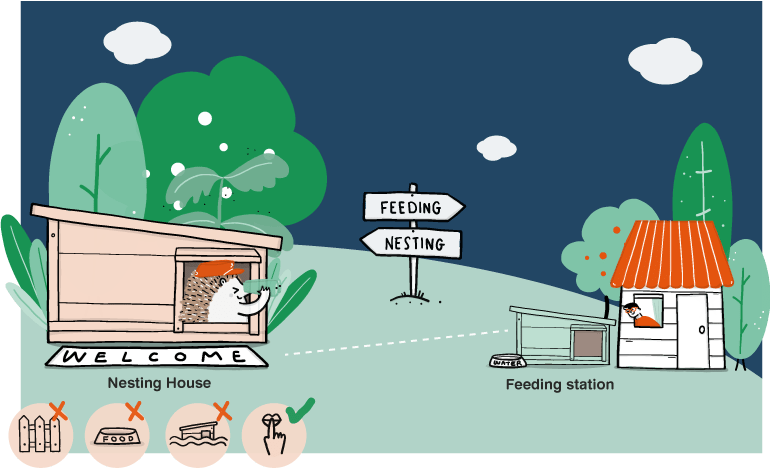

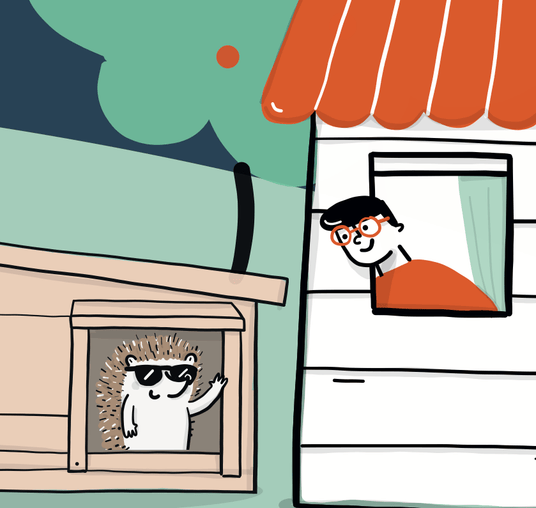
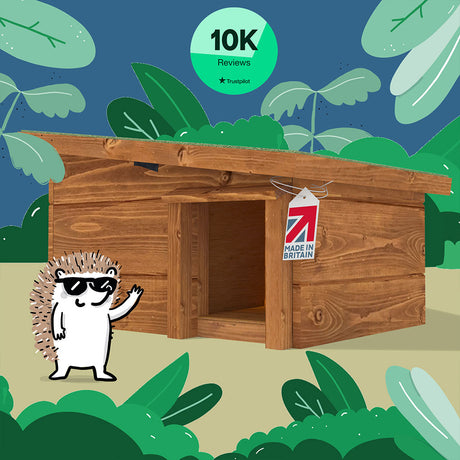
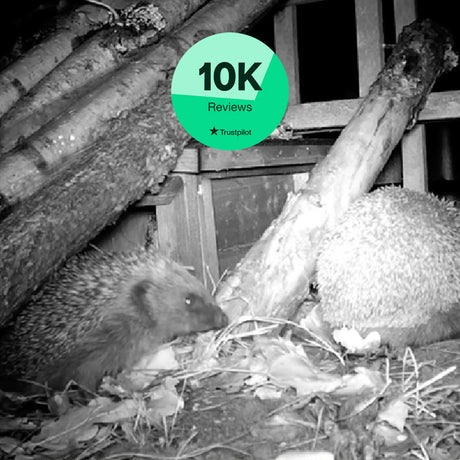
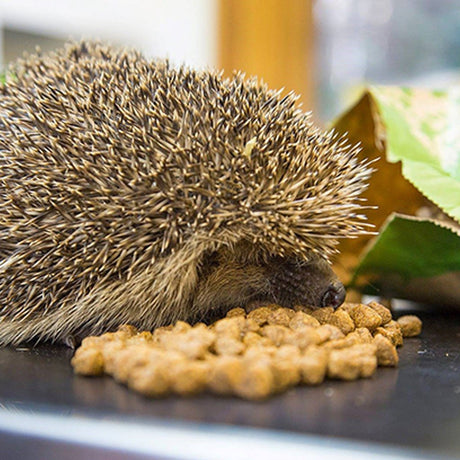
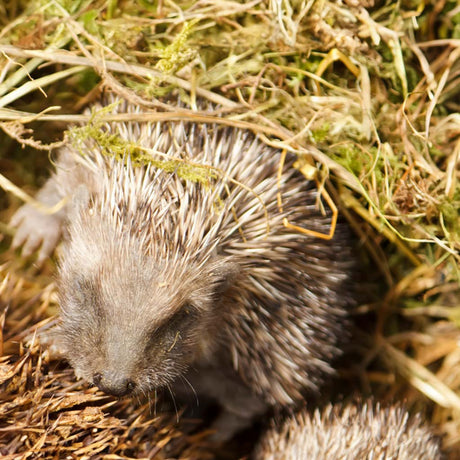
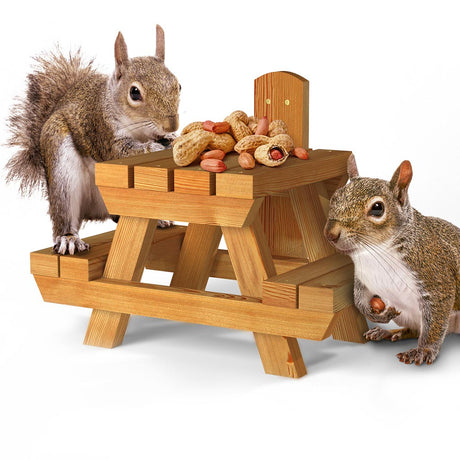
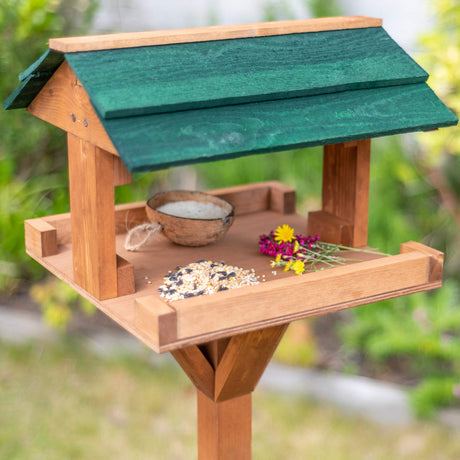
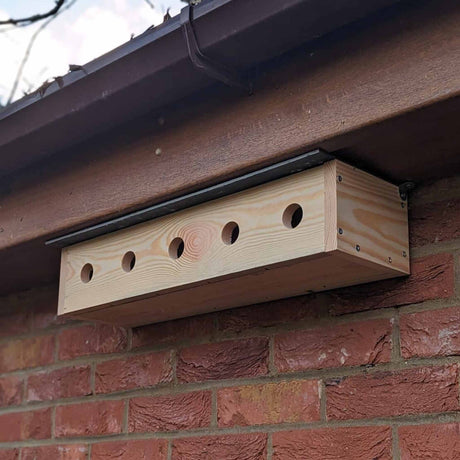
10 comments
Hello I have found this article really infofmative. I initially put a bowl of food in my hedgehog house, as it had 2 chambers. Once a hedgehog took up residence it removed the bowl itself! I have a seperate feeding station. I have rescued 3 babies this year. All weighed below 200g, and were out during the day. I was advised at this time of year (October) they need to be at least 400g to survive the winter. I took them to our local hedgehog center, where they will be fattened up before being released back into the wild. This will be probably next spring. I also made a donation to the center to help with their up keep. Thank you again.
Hello I have found this article really infofmative. I initially put a bowl of food in my hedgehog house, as it had 2 chambers. Omce a hedgehog took up residence it removed the bowl itself! I have a seperate feeding station. I have rescued 3 babies this year. All weighed below 200g, an were out during the day. I was advised at this time of year (October) they need to be at least 400g to survive the winter. I took them to our local hedgehog center, where they will be fattened up before being released back into the wild. This will be probably next spring. I also made a donation to the center to help with their up keep. Thank you again.
Very informative thank you.
I have two hog houses one for feeding station used first night I put it out, I’m still puzzling how close to put the nesting box.
Very informative thank you.
I have two hog houses one for feeding station used first night I put it out, I’m still puzzling how close to put the nesting box.
Your article is very informative and I’m grateful as hedgehogs are new to me. I knew because of the poo they were in my garden so I bought a house, food and straw. The hedgehog went in the very first night. I’m unsure whether it sleeps there during the day but would like to change the straw and give it a clean.. is it likely that it sleeps there during the day. Many thanks.
Clare thank you very much for the article it is most helpful. I put my hedgehog house on my patio a week ago and already have a little hog coming for his supper every night. I got special hedgehog food including hedgehog pate and it is all eaten every morning. I bought a special house that is safe from predators and it has a ramp and the little hog has no difficulty going up the ramp and feels safe as he eats. I put some hay in also and maybe it will be used for nesting. Many thanks Ann.
thanks for the article – very useful. I think I need to move my hedgehog house away from the fence. The spot I’m going to move occasionally floods (a couple of cm deep). If I lift the house up about 10cm will hedgehogs climb in?
Great article, thank you! I put in a feeding station at the end of last week and the food has all disappeared every single night since – so I’m thinking about adding a nesting box. How far apart do they need to be?
Hi Iain,
They should do, I would maybe make a little ramp or a step up to give them a hand.
Best of luck
Clare
thanks for the article – very useful. I think I need to move my hedgehog house away from the fence. The spot I’m going to move occasionally floods (a couple of cm deep). If I lift the house up about 10cm will hedgehogs climb in?